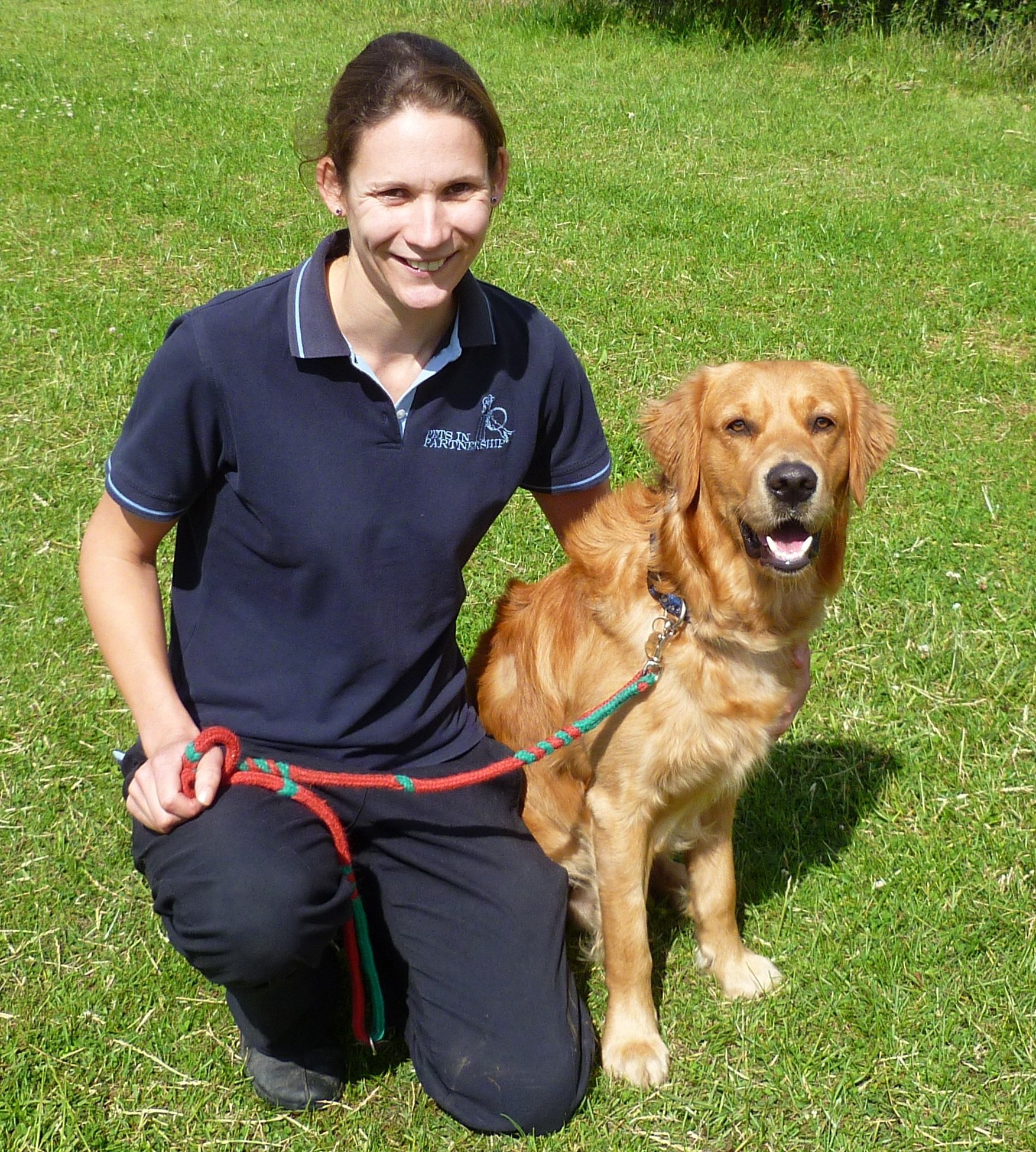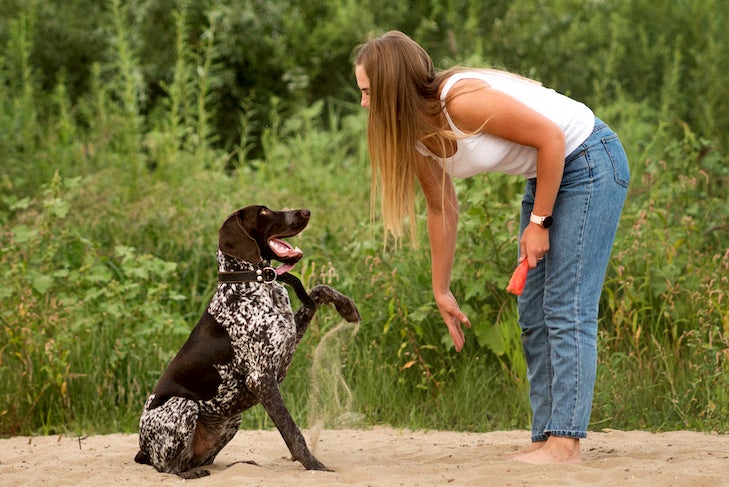Dog Training Charlotte NC: Your Course to a Mannerly Dog
Wiki Article
The Ultimate Guide to Pet Dog Training: Structure a Happy, Obedient Pet Dog
Effective pet training is a complex procedure that pivots on a deep understanding of canine habits and the application of tested techniques. By embracing favorable support and constant command usage, pet proprietors can grow not only obedience but also a solid, relying on connection with their canines.
Comprehending Canine Actions
Exactly how does a dog's habits reflect its mental and psychological state? A canine's activities can act as a home window into its sensations, needs, and total psychological health. As an example, a wagging tail commonly represents joy and excitement, while a decreased tail may suggest fear or submission. Vocalizations such as whining or barking can interact a range of feelings, from joy to distress.Body language likewise plays a critical role in understanding canine habits. A kicked back stance and open mouth signal convenience, whereas stressful muscular tissues and pinned ears might suggest anxiety or aggression. Observing these signals is vital for determining the origin triggers of a pet dog's actions, whether it originates from aggravation, excitement, or fear.
In addition, a pet's communication with its atmosphere and other pets can supply insight into its emotion. A pet that engages playfully with various other canines is most likely sensation social and secure, while one that shows evasion or hostility may be experiencing stress and anxiety or instability. Comprehending these behavioral hints is important for fostering a solid partnership between the owner and the family pet, ultimately adding to the dog's psychological wellness and well-being.
Necessary Training Strategies
Reliable canine training strategies are necessary for fostering preferable actions and reinforcing the bond between a pet dog and its owner. Utilizing favorable support is one of the most effective methods, where incentives such as deals with, appreciation, or playtime are offered to strengthen desired actions (Dog training). This motivates the pet dog to repeat those habits, developing a positive learning settingConsistency is another crucial component in canine training. Commands should be clear and uniform, and all member of the family should apply the very same rules to avoid confusing the canine. Timing is just as vital; rewards should be offered quickly after the desired actions to develop a clear link between the activity and the benefit.
In addition, interesting and brief training sessions are effective, as pets have varying attention spans. Go for sessions of 5 to 15 minutes, depending upon the dog's age and power degree. Integrating play right into training can also enhance inspiration and pleasure for both the proprietor and the pet dog.
Finally, persistence is essential. Pets discover at their own speed, and preserving a tranquil attitude will assist minimize irritation, making certain a favorable training experience. These vital techniques lay the groundwork for effective canine training and an unified connection.
Fundamental Commands to Teach

Consistency and positive support are vital when instructing these commands. dog training charlotte nc. Usage treats, praise, and play to reward your pet's successes. Short, regular training sessions are more reliable than long, seldom ones. By instilling these basic commands, owners equip their canines with the skills necessary for a harmonious and well-behaved partnership.
Dealing With Usual Behavioral Problems
Comprehending and resolving usual behavioral issues in dogs is essential for cultivating an unified connection between animals and their owners. Many canines display behaviors such as extreme barking, eating, or aggression, which can originate from anxiety, boredom, or lack of proper training. Identifying the source of these actions is the very first step toward reliable intervention.For instance, excessive barking may suggest a requirement for attention or a feedback to ecological stimulations. In such situations, owners ought to evaluate the canine's atmosphere and give sufficient mental stimulation, such as interactive toys or routine workout. Chewing can often be managed by rerouting the behavior to proper chew items and making sure that the dog has adequate physical task to reduce dullness.
Hostile actions requires mindful handling and may require professional training aid. It's critical to comprehend that penalty can aggravate anxiousness and hostility, causing a cycle of behavior concerns. Instead, concentrate on positive support methods to reward preferable habits and strengthen a complacency.
Building a Positive Training Atmosphere
Creating a favorable training environment is fundamental for strengthening preferable behaviors in dogs and reducing behavior problems. This atmosphere must be characterized by consistency, motivation, and a clear understanding of the training goals. By developing a routine, pet dogs learn what is expected of them, which helps decrease stress and anxiety and confusion.Using favorable support techniques, such as deals with, appreciation, and play, fosters a feeling of safety and inspiration in the pet dog. Rewarding great actions promptly and constantly reinforces the wanted actions, making the training procedure a lot more reliable - Dog training. Furthermore, instructors ought to remain person and calm, as canines are sensitive to their trainers' feelings
The training space ought to be devoid of distractions to ensure the pet can concentrate on the jobs available. Think about utilizing a peaceful area or a secure outdoor location. In addition, including play and socializing right into training sessions promotes a well-rounded technique, improving the dog's knowing experience.
Inevitably, a favorable training environment supports a solid bond between the pet dog and trainer, causing a loyal, happy pet. By prioritizing this setting, pet proprietors can effectively attend to behavior obstacles and grow a successful training journey.
Final Thought
Effective dog training relies on a detailed understanding of canine actions and the application of favorable support strategies. Taking on these concepts makes sure a satisfying training experience for both pets and their proprietors.Efficient pet dog training is a diverse procedure that hinges on a deep understanding of canine behavior and the application of proven techniques. A dog that involves happily with various other pet dogs is likely feeling social and secure, while one that exhibits evasion or aggressiveness might be experiencing tension or insecurity.Effective pet training strategies are necessary for promoting desirable behaviors and reinforcing the bond in between a canine and its owner.Developing a favorable training environment is fundamental for enhancing desirable behaviors in pets and alleviating behavioral concerns.Reliable canine training relies on a thorough understanding of canine habits and the application of positive support techniques.
Report this wiki page